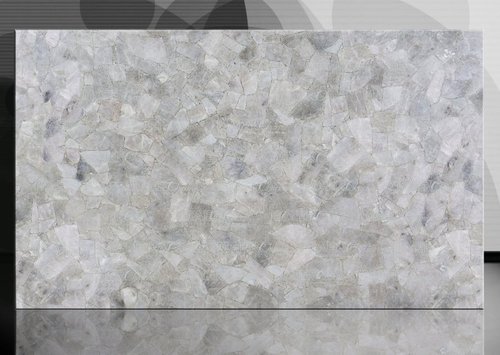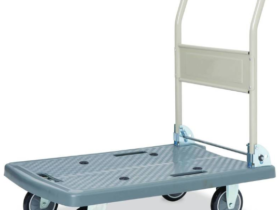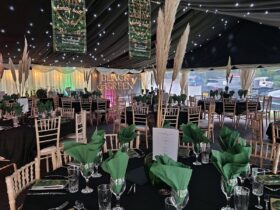Ceilings are important. And, although most people favor timber ceiling tiles, knowing the various kinds of ceilings may help you express your ideas for a room.
The kind of ceiling you choose is determined by your specific area, as well as your design goal. Is it necessary for it to be complex and eye-catching? Or does it need to be more than just aesthetically pleasing and have better performance characteristics?
Here are the eight distinct kinds of ceiling timber tiles that are most frequently used in residential and commercial settings to help you select the appropriate design for your area.
Different Types of Timber Ceiling Tiles For Your Commercial and Residential Space
1. Suspended Timber Ceiling
A suspended ceiling, also referred to as a dropped ceiling, is held up by a metal grid that is placed under the existing top.
These flat drop ceilings, which are often used in combination with noise-reducing acoustic ceiling tiles, enable designers to hide mechanical, plumbing, electrical, and lighting components (MEP) such as cables and pipes above the dropped, exposed ceiling. Moreover, because suspended ceilings provide designers incredible freedom, this kind of timber ceiling tiles is most frequently utilized in commercial buildings, offices, and retail areas.
2. Normal Conventional Ceiling
A traditional ceiling construction style is utilized in the majority of homes. These ceilings feature a typical drywall finish and are constructed of less expensive materials, necessitating simple installation.
Conventional ceilings are level and simple, measuring 8 to 9 feet high and accommodating conventional construction material quantities. Despite being more easily accessible, a space may seem to confine if the ceilings are too low. Raising the top by a few feet may substantially improve space and even the resale value of a property.
3. Tray Ceiling
Tray ceilings, also known as fanned ceilings, gradually drop with each additional step or “level” surrounding the elevated center, giving a three-dimensional appearance as the roof spreads outwards.
These ceilings may give a dramatic impact to a room while also making it seem taller. Moreover, panned ceilings are usually two to three levels high, with each group falling 5 to 11 inches below the one above.
4. Coffered Ceiling
Coffered ceilings, common in high-end houses, churches, libraries, and hotels, reflect a traditional, almost opulent, style. Coffered ceilings are a more expensive choice than standard options, and they must be installed by experts who are acquainted with this style.
Commercial wood coffered ceilings are easily identified by their grid of inverted panels accented by molding. They are usually built to operate with conventional T-Bar suspension grids, which help simplify the installation process.
5. Cathedral Ceiling
Cathedral ceilings are typical in big living rooms, dining rooms, bedrooms, and even master bathrooms.
Cathedral or vaulted – ceilings are distinguished by their inverted V-shape, with the apex of the V being the highest point and the sides sloping down.
These high ceilings are constructed of a variety of materials. Linear wood is an excellent material to utilize, whether in planks or panels attached continuously or gradually.
6. Coved Ceiling
Coved ceilings are often seen in informal spaces, theaters, and churches. The Vatican, for example, is home to one of the world’s most renowned coved ceilings.
This concave ceiling has curved edges rather than acute angles between the ceiling and walls and is often constructed with curved molding or a frame to give it a dome-like appearance. The coves begin at the top of the leading wall and continue to the ceiling.
7. Shed Ceiling
Shed ceilings, also known as single-slope ceilings, are common on the upper level, either in the attic or loft. A shed ceiling will start at a high point on one side and slope down toward the other wall, giving your space a unique appearance.
Moreover, the shed ceiling in commercial buildings is similar to the shed roof construction. It also provides designers with a lot of freedom. Timber ceiling tiles may also be hung on a slope using a conventional suspension grid if the leading runners are placed down the hill.
8. Beam Ceiling
Beam ceilings are often seen in business contexts like halls and corridors and domestic settings, such as living and dining rooms. It is a classic ceiling shape while being considered a modern design. Beams, mainly made of hardwoods like Douglas fir, give houses a traditional, rustic appearance.
When larger, load-bearing timbers are exposed inside the space, the natural wood adds aesthetic interest to the area. On the other hand, when load-bearing beams are not needed, a replica of the shaft is made using plywood and miters and is utilized only for aesthetic purposes.
Timber ceiling tiles are believed to have been utilized in buildings for thousands of years. It was perhaps the first actual construction material, second only to stone, and was used to construct almost every structure. With such a rich history, it’s easy to understand why we’re still utilizing it to build today.










